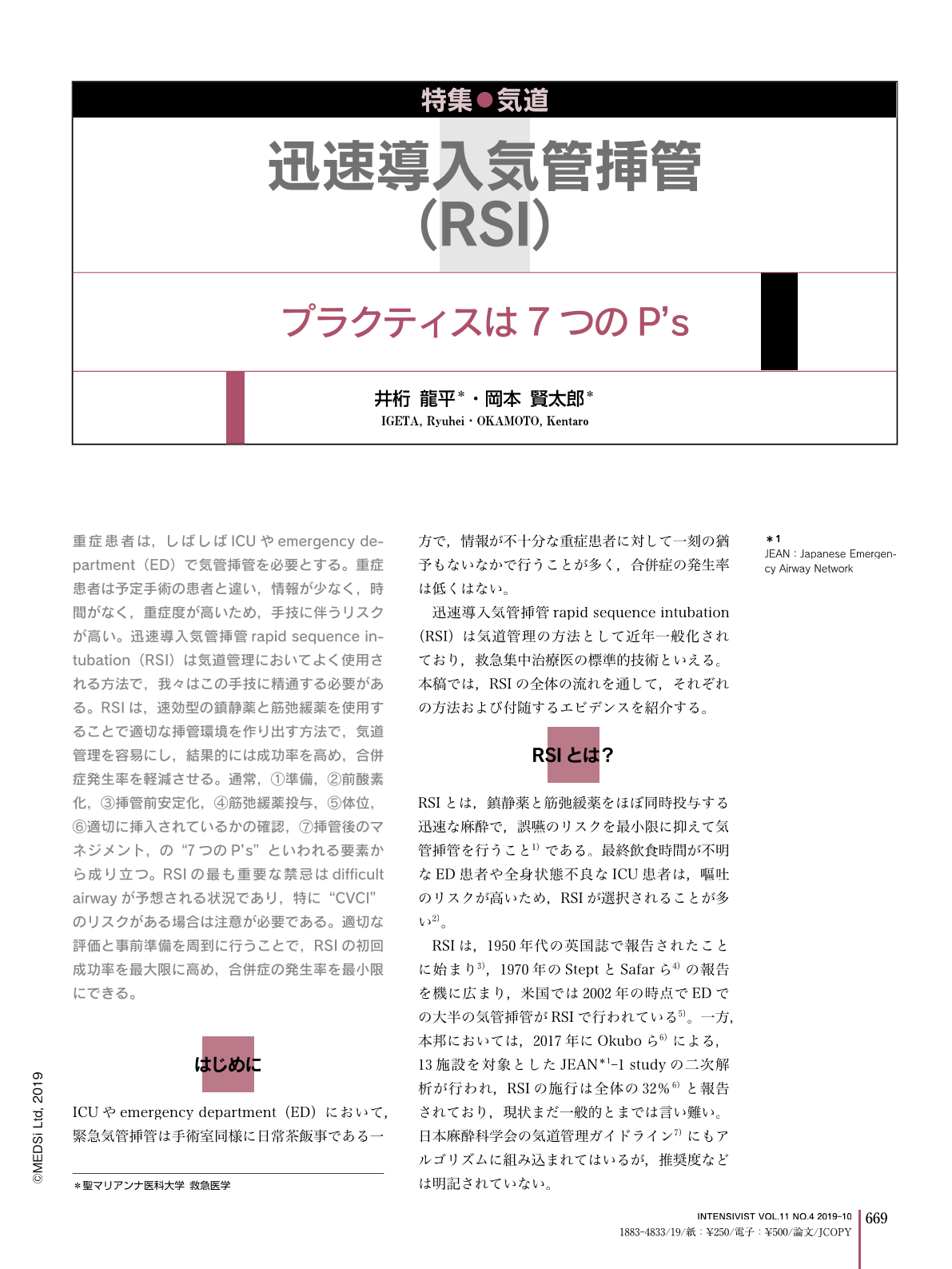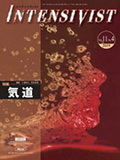Japanese
English
- 有料閲覧
- Abstract 文献概要
- 1ページ目 Look Inside
- 参考文献 Reference
重症患者は,しばしばICUやemergency department(ED)で気管挿管を必要とする。重症患者は予定手術の患者と違い,情報が少なく,時間がなく,重症度が高いため,手技に伴うリスクが高い。迅速導入気管挿管rapid sequence intubation(RSI)は気道管理においてよく使用される方法で,我々はこの手技に精通する必要がある。RSIは,速効型の鎮静薬と筋弛緩薬を使用することで適切な挿管環境を作り出す方法で,気道管理を容易にし,結果的には成功率を高め,合併症発生率を軽減させる。通常,①準備,②前酸素化,③挿管前安定化,④筋弛緩薬投与,⑤体位,⑥適切に挿入されているかの確認,⑦挿管後のマネジメント,の“7つのP's”といわれる要素から成り立つ。RSIの最も重要な禁忌はdifficult airwayが予想される状況であり,特に“CVCI”のリスクがある場合は注意が必要である。適切な評価と事前準備を周到に行うことで,RSIの初回成功率を最大限に高め,合併症の発生率を最小限にできる。
Critically ill patients frequently require endotracheal intubation in the intensive care unit (ICU) or in the emergency department (ED). They differ from typical elective surgical patients intubated in the operating room because of insufficient patient information, lack of time, and the severity of their illness. RSI is commonly used for airway management and we need to be familiar with the technique. The purpose of RSI is to make emergent intubation easier and safer, thereby increasing the success rate of intubation and decreasing the rate of complications. RSI uses a rapidly acting agent and a neuromuscular blocking agent to create optimal conditions for intubation enabling rapid control of the airway. RSI generally consists of seven steps known as the “Seven Ps of RSI”:(1) Preparation, (2) Preoxygenation, (3) Preintubation optimization, (4) Paralysis with induction, (5) Positioning, (6) Placement with proof, and (7) Postintubation management. The most important contraindication to RSI is anticipation of a difficult airway especially if there is a risk of “Cannot Ventilate, Cannot Intubate (CVCI)”. With appropriate risk assessment and careful preparation, we can maximize the success rate of the first attempt and minimize the incidence of complications.

Copyright © 2019, MEDICAL SCIENCES INTERNATIONAL, LTD. All rights reserved.


